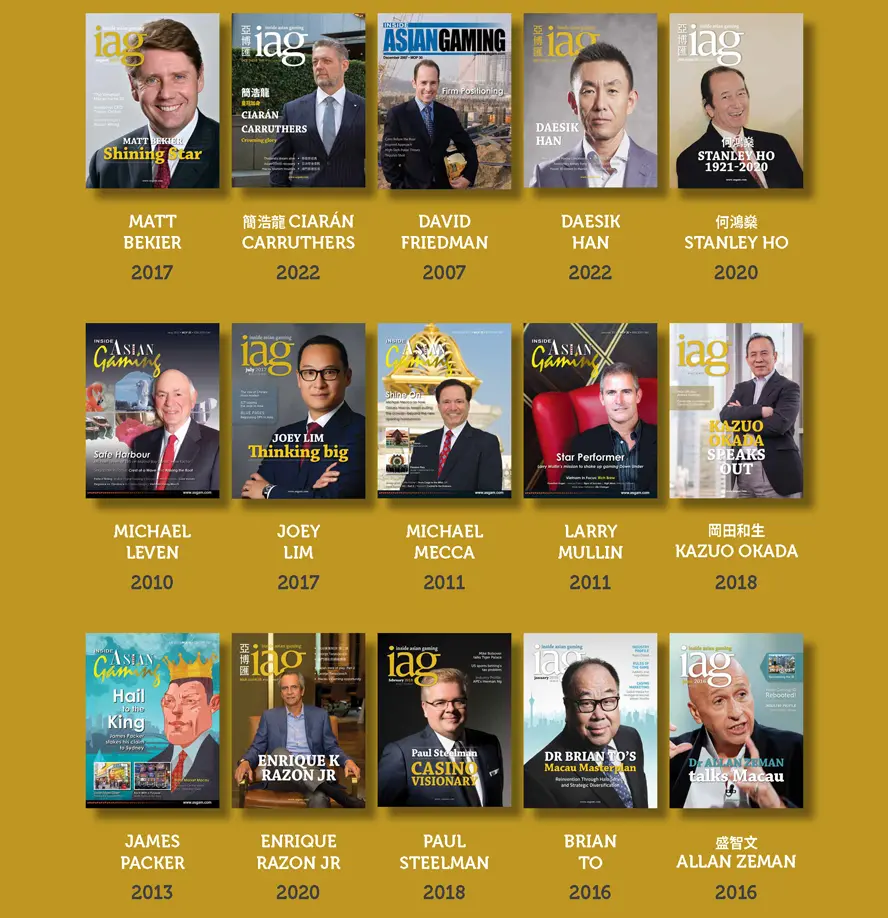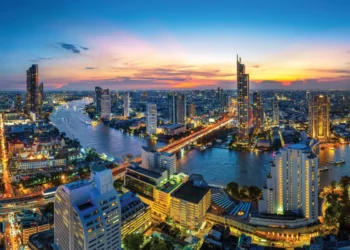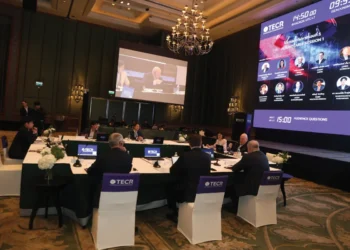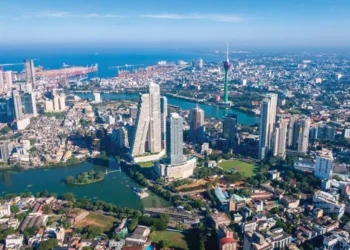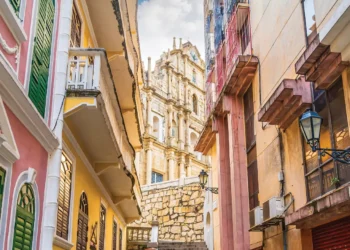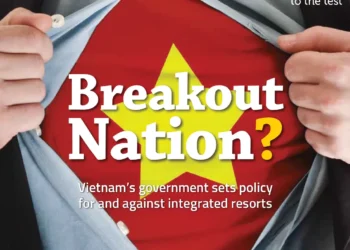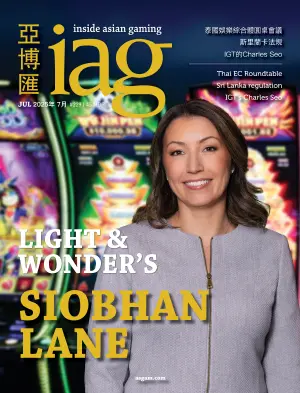It has been quite the ride for Inside Asian Gaming, from a small 40-page pilot publication back in September 2005 to the industry’s premier monthly industry journal – celebrating its 200th issue this month (February 2023).
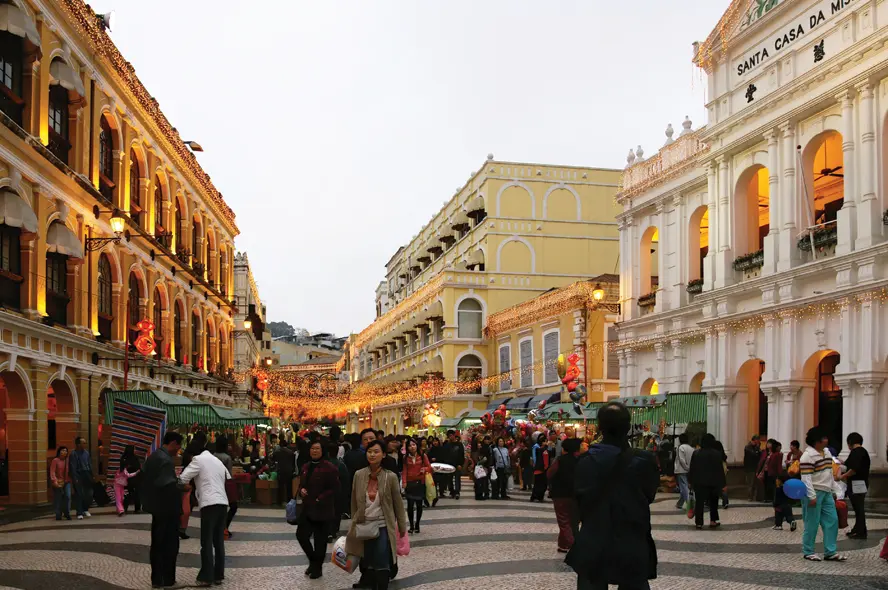
IAG was launched almost 18 years ago in response to the liberalization of Macau’s casino industry, which saw Stanley Ho’s Sociedade de Turismo e Diversões de Macau (STDM) lose the monopoly gambling contract it had held for the previous 40 years.
That monopoly system was replaced by three new gaming concessions – awarded to STDM subsidiary Sociedade de Jogos de Macau (SJM), Galaxy Casino and Wynn Resorts Macau – plus three sub-concessions in MGM Grand Paradise, Melco PBL Jogos (Macau) and Venetian Macao.
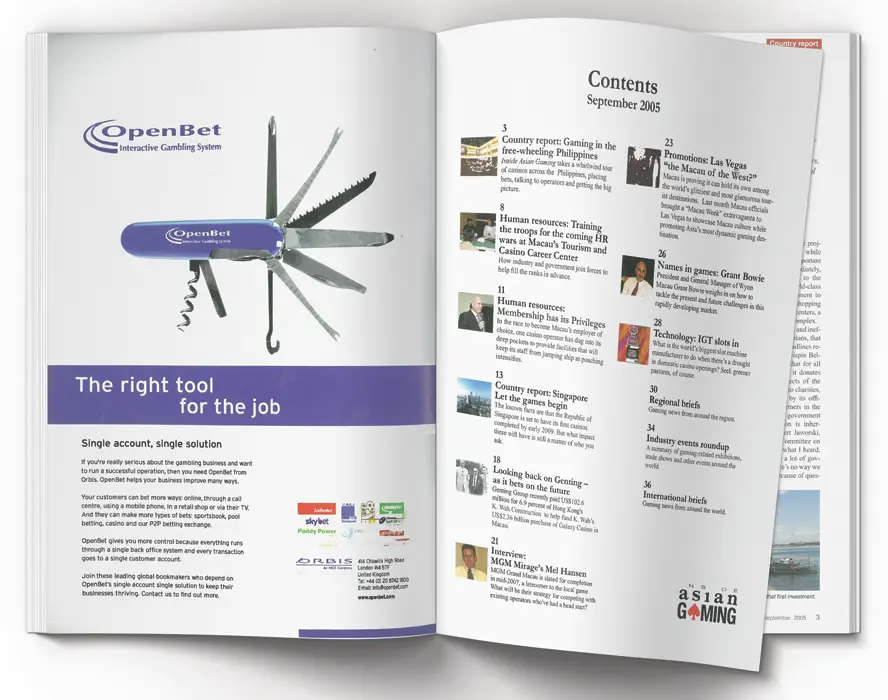 Any doubts over the potential of Macau’s newly liberalized casino industry were dispelled in one fell swoop on 18 May 2004 when some 40,000 people surged through Macau’s first integrated resort – Sands Macao – on opening day. As the famous story goes, Sands staff were literally forced to rip the front doors off their hinges to let exuberant patrons in and avoid a crush. That was a small price to pay, however: Sands Macao made back the US$265 million it cost to build it within its first nine months of operation.
Any doubts over the potential of Macau’s newly liberalized casino industry were dispelled in one fell swoop on 18 May 2004 when some 40,000 people surged through Macau’s first integrated resort – Sands Macao – on opening day. As the famous story goes, Sands staff were literally forced to rip the front doors off their hinges to let exuberant patrons in and avoid a crush. That was a small price to pay, however: Sands Macao made back the US$265 million it cost to build it within its first nine months of operation.
That very first pilot issue of IAG, with a cover date of September 2005 and now referred to as “Issue Zero”, carried the headline “Singapore: let the games begin”, referring to the race to win a license to operate one of two integrated resorts with casinos in the city state. That issue was not widely distributed and is now a collector’s item – with just a single copy remaining in the IAG office!
Issue Zero and many of the early issues of IAG were a mere 40 pages in length, including the front and back cover, less than half the 100-page minimum requirement for an issue of IAG today. The pilot issue featured Venetian Macao’s founder, the late Sheldon Adelson, former Macau Government Tourism Office (MGTO) Director João Costa Antunes, then-Wynn Macau President Grant Bowie, then-Macau Social Affairs and Culture Secretary Chui Sai On (who would go on to become Chief Executive of Macau from 2009 to 2019), Venetian’s Raymond Chan, the founder of Korea’s Paradise Group, the late Chun Rak-won, then-PAGCOR Chairman Efraim C Genuino, then-MGM Mirage Development Vice President Mel Hansen, STDM’s founder, the late Dr Stanley Ho and his children Pansy Ho and Lawrence Ho, Genting’s founder, the late Lim Goh Tong, and his son and now-Genting Chairman Lim Kok Thay, then-Venetian COO Frank McFadden, then-IGT Asia Managing Director Scott Winzeler and Wynn Macau founder Steve Wynn. Even Donald Trump, Brad Pitt, George Clooney and Cindy Crawford got a mention in passing!
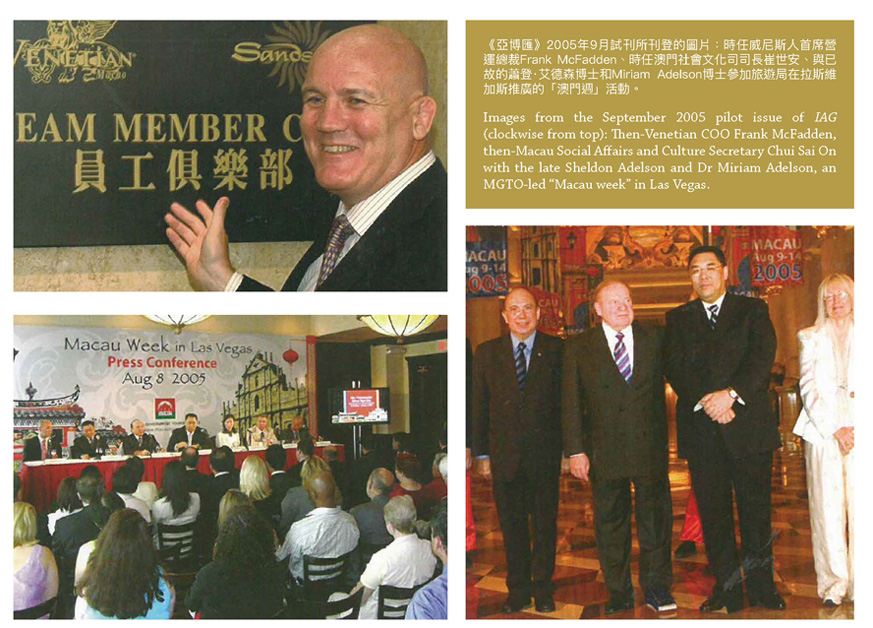 Topics covered were the Philippines including PAGCOR and the Subic Diamond casino, the shortage of skilled staff in a burgeoning new casino location called Macau, the Genting Group, the upcoming Macau properties of MGM and Wynn, an MGTO-led “Macau week” in Las Vegas, IGT slots in Asia, and – proving the more things change the more they stay the same – the prospects of casinos in Japan and Thailand!
Topics covered were the Philippines including PAGCOR and the Subic Diamond casino, the shortage of skilled staff in a burgeoning new casino location called Macau, the Genting Group, the upcoming Macau properties of MGM and Wynn, an MGTO-led “Macau week” in Las Vegas, IGT slots in Asia, and – proving the more things change the more they stay the same – the prospects of casinos in Japan and Thailand!
The first “real” issue of IAG, issue #1, had a cover date of October 2005 and featured the cover story “Critical Mass Under Construction: Making Macau ‘the place to go’ in Asia”.
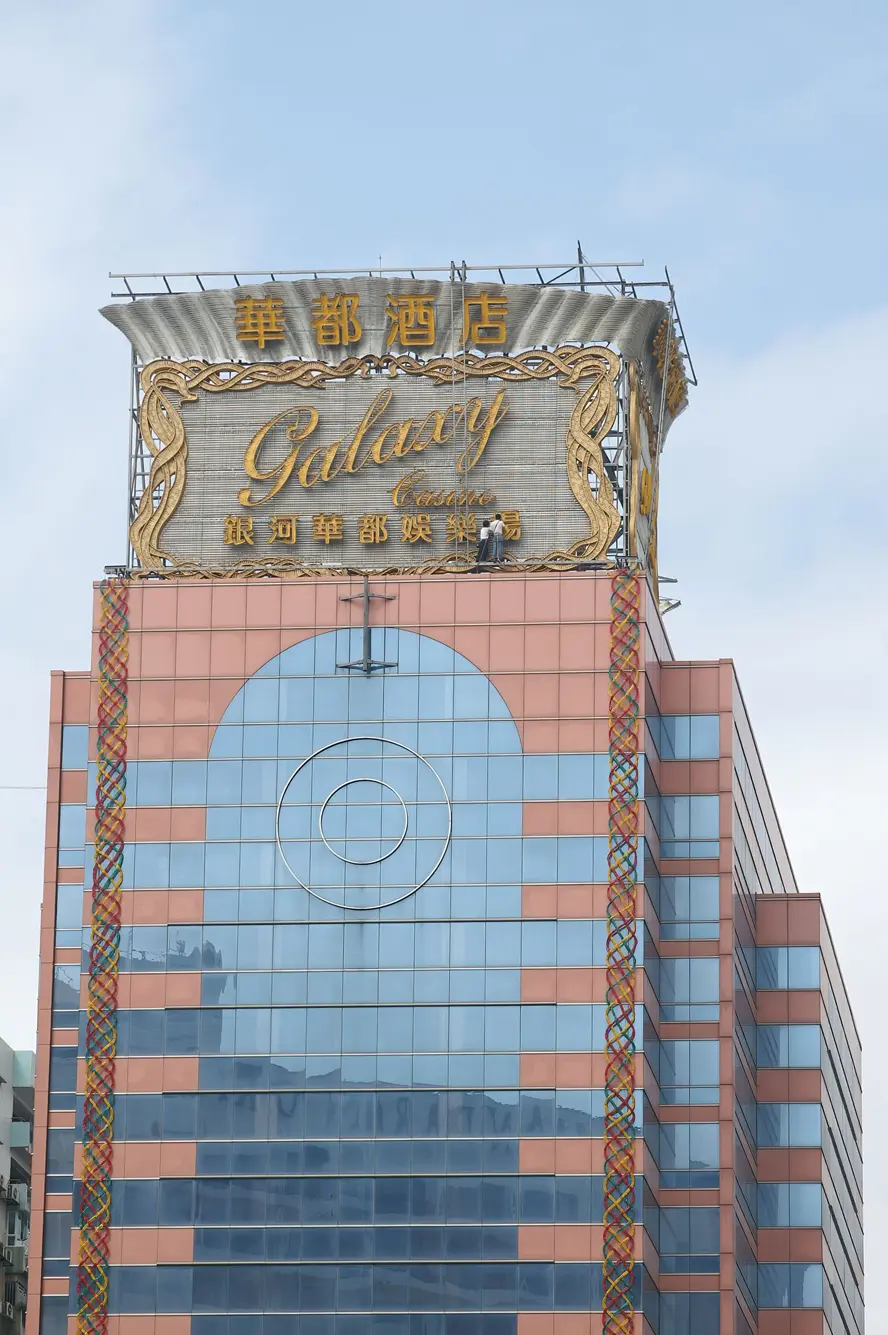
“Back then Macau was on the brink of change, but no one knew how big the market was going to be,” recalls Ken Jolly, currently Vice President and Managing Director – Asia for Light and Wonder but a senior executive with Aristocrat at that time.
“Sands Macao and [Galaxy’s] Waldo had opened with amazing numbers but the question at the time was: is it sustainable and how big can it be? The next 17 years answered that question.”
Quoted by IAG in our first official magazine edition published in October 2005, then-Venetian Chief Operating Officer (now COO at SJM) Frank McFadden described Sands Macao as “almost a laboratory” whereby company founder Sheldon Adelson conducted an expensive experiment.
Adelson “simply designed something that was the antithesis of what was here before,” McFadden explained. “So by design they actually differentiated themselves from the market. Where you have low ceilings, we have high ceilings. Where you have dark corners, we have light corners. Where you have no entertainment, we have entertainment. Where you have a chair that has to be cheap and functional, we have design elements in it.
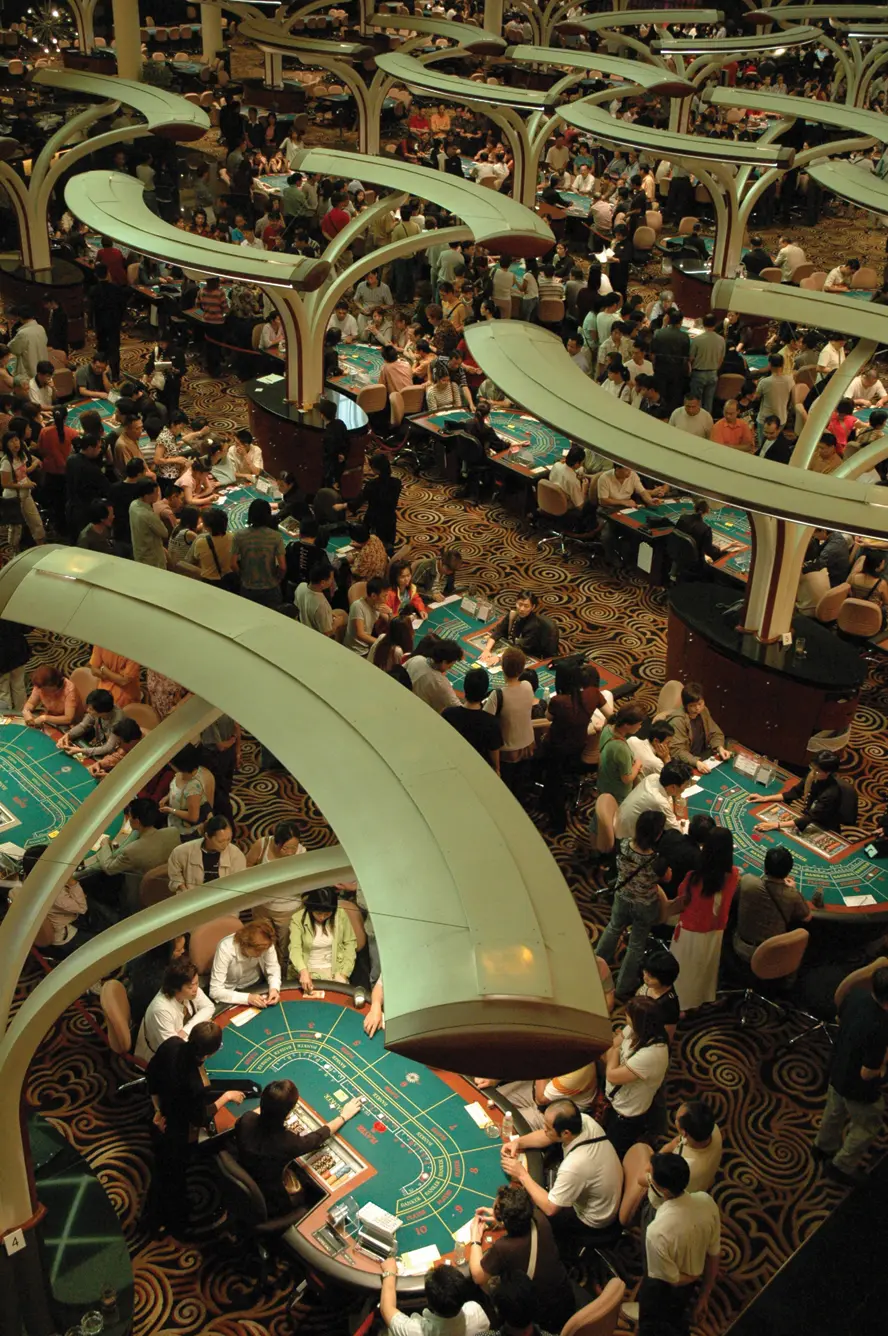
“All those sorts of design elements made people come in and just say ‘wow’.”
As the industry grew, IAG grew with it. Following the Issue Zero pilot and publication of issues #1 in 2005 and five more in 2006, we finally went monthly in January 2007 and haven’t looked back – publishing every single month and without missing a beat in the 194 months since then.
We’ve also been there to witness the industry’s spectacular expansion: in the 2007 calendar year 11 of our 12 cover stories were about Cotai and the emergence of the Macau integrated resort. In fact, in October 2007 – a little over a month after the opening of The Venetian Macao – we wrote, “Over the coming months, Venetian Macao will prove whether Asians have sufficient appetite for Vegas-style non-gaming offerings to fill the coming pipeline of large-scale integrated resorts set to mushroom around Asia – particularly in Macau and Singapore – over the next few years. The mega resorts will change the face of gaming in Asia.”
Speaking with IAG for this 200th issue, world-leading casino architect Paul Steelman – the man behind Sands Macao and Galaxy Macau and who featured on the cover of the February 2018 issue of IAG –recalls how those early risks in Macau paved the way for the industry Asia-wide.
“Sands in 2004, wow – what an amazing experiment that was, which proved an incredible market,” he recalls.
“We designed more VIP casinos in 10 years than we did in the previous 20. I believe Galaxy set a very high bar in how to build and expand a very competitive resort in Macau. You would have to say that Galaxy is in the top 10 integrated resorts in the world, having created an Asian yet Vegas experience.
“Back then Macau was no different than any other new casino jurisdiction – the goal was to build as much gaming as possible with the proper amount of supporting spaces to make the gaming successful in a restrained but competitive market.
“The present-day Macau, as advertised by the government, looks a lot more like Las Vegas.”
By 2008, however, IAG was starting to look abroad with major features on the rise of gaming in Manila and of course the looming launch of two large-scale integrated resorts in Singapore.
Opened in 2010 amid much fanfare, Marina Bay Sands and Resorts World Sentosa quickly established themselves among the most profitable IRs globally, with MBS in particular becoming an iconic feature of the Singapore skyscape.

“Singapore has proven to be a really good example of a partnership between government and industry,” explains IGT’s Sales Director, Asia, Michael Cheers, who first moved to Singapore in 2013.
“I think Singapore is a model that has been used and adopted around the region and potentially is a bit of a benchmark in terms of other countries looking at what to do. It is also, given some of the more recent developments in regulation around things like junkets, a model that has stood the test of time. That’s been a real positive.
“I would also say that, while the term integrated resort is used a lot across our industry, Singapore is a great example of how a true integrated customer-tourist experience could be put together for the broader community’s benefit. The gaming environment is a small segment of the overall offering, be that theme parks, infinity pools, sky decks, VIP shopping experiences, or high-end restaurant opportunities combined with recent F&B trends. It really packaged together what a true integrated experience was, even though there are casinos there too.
“And when it comes to tourism, there aren’t many photos of Singapore that don’t show the image of Marina Bay Sands.”
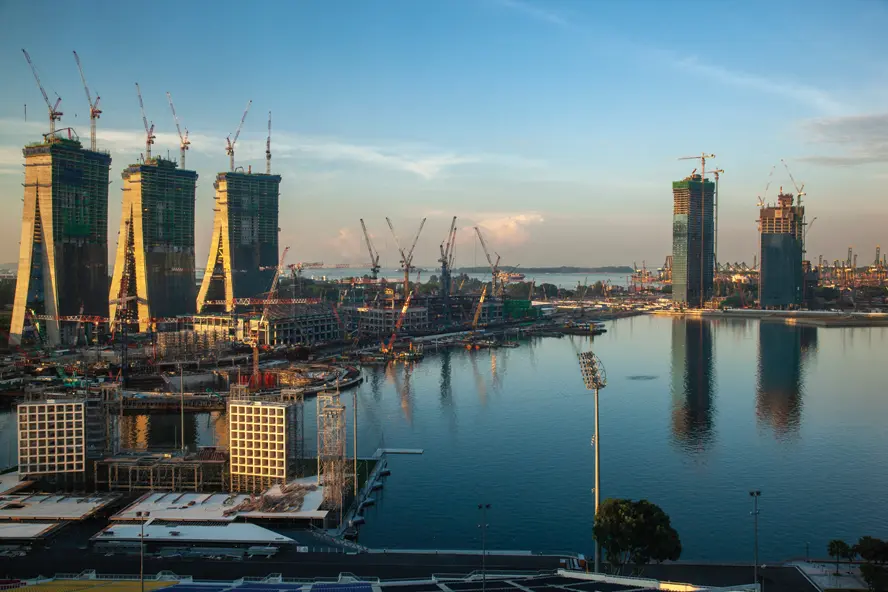
Shortly after the opening of Singapore’s IRs, another ground-breaking new development was taking shape in Manila. Solaire Resort in Entertainment City opened its doors in March 2013 – a veiled warning to the rest of Asia that the Philippines was determined to make its presence felt on the regional gaming scene. The city’s second true integrated resort following the 2009 launch of Resorts World Manila (recently rebranded as Newport World Resorts), Solaire put Manila’s IR bona fides on a whole new plane with a level of glamour and hospitality at least on par with anything Macau or Las Vegas has to offer.
By 2015, Manila was well and truly on IAG’s radar with a lengthy cover feature following the opening of its third IR, City of Dreams Manila, and looking ahead to the eventual opening of a fourth, Okada Manila, and a soon-to-be fifth, Westside City.
“The Philippines is clearly focused on developing its tourism industry, and with over 7,000 beautiful islands it has the opportunity to do that,” explains Jolly.
“The IRs have lifted the quality of casino offering [in the Philippines] and it can now boast some of the best presented casinos globally, helping to fuel tourism growth.
“When you look at Asian gaming now compared to 2005, it has certainly developed to be a stronger and more presentable market. The Philippines has risen to become a dominant Asian market and pre-COVID Macau has shown the world the value of Asian gaming.”
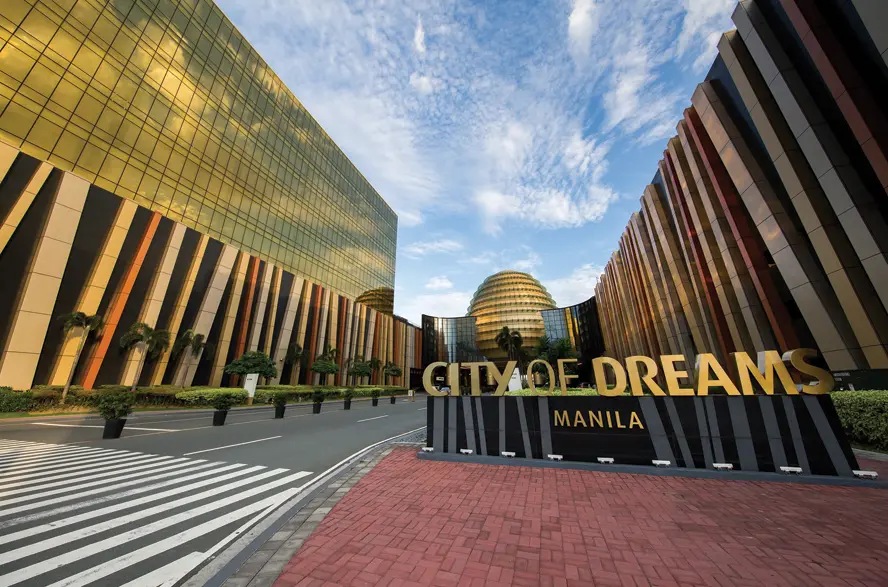 With a brief to bring our readers genuine insight into how the industry is unfolding, IAG has been at the forefront of countless other developments too. More than a decade ago we flagged Japan as the next great Asian gaming jurisdiction – and for a while it was.
With a brief to bring our readers genuine insight into how the industry is unfolding, IAG has been at the forefront of countless other developments too. More than a decade ago we flagged Japan as the next great Asian gaming jurisdiction – and for a while it was.
When that dream began falling by the wayside, we wrote in January 2021 that it was “crunch time” for Japan’s IR industry, then 12 months later followed up with the cover line “Opportunity lost” exploring how a dazzling promise had so dramatically faded. Perhaps MGM Resorts, with its spectacular US$9 billion Osaka IR concept, can salvage some Japanese pride should they eventually be awarded a license by Japan’s central government.
We were among the first to recognize the impending doom in Saipan, home to shuttered casino Imperial Palace • Saipan, with our February 2017 cover story “Trouble in Paradise”. We also delved into Chow Tai Fook’s controversial acquisition of the Bahamian integrated resort Baha Mar in March of the same year and explored the Battle for Australia’s Gold Coast in August 2019.
Along the way we’ve spoken to some of the biggest names in the industry, including interviews with the likes of Galaxy’s Francis Lui, Melco’s Lawrence Ho, former Suncity Group CEO Alvin Chau, Bloomberry Resorts Corp CEO and Chairman Enrique Razon Jr – one of the Philippines’ richest men – and most recently Crown Resorts CEO Ciarán Carruthers and Philippines gaming visionary Daesik Han.
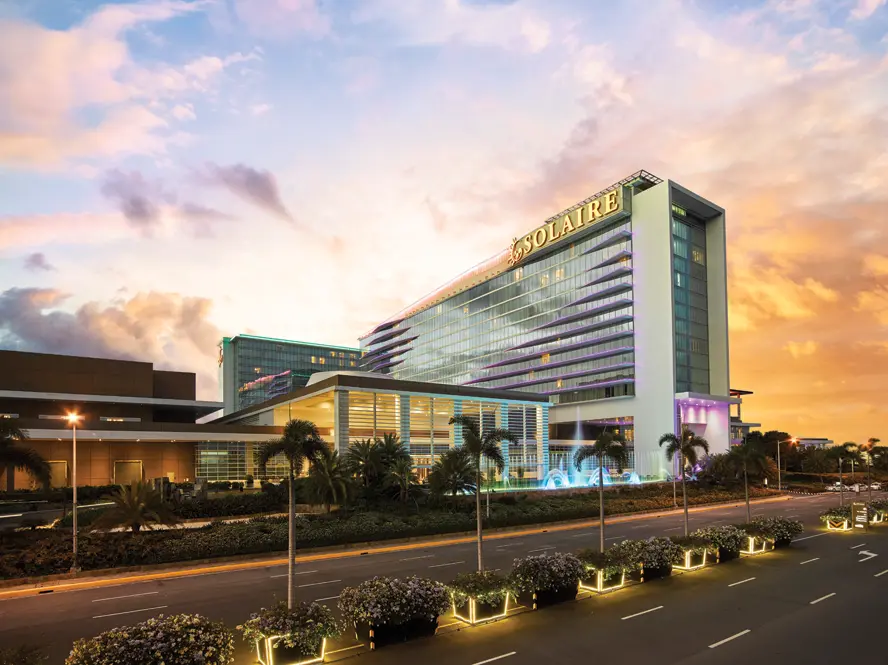 All of this while continuing to expand our brand: the April 2017 launch of IAG’s daily industry newsletter, IAG Breakfast Briefing, marked a turning point for our company, one that propelled us to the status of most-read B2B gaming industry media outlet in all of Asia. Indeed, before the demise of the Alexa website rankings system in May 2022, IAG’s website asgam.com ranked as the most-read gaming industry media outlet in the world, and we’ve no reason to suspect that has changed!
All of this while continuing to expand our brand: the April 2017 launch of IAG’s daily industry newsletter, IAG Breakfast Briefing, marked a turning point for our company, one that propelled us to the status of most-read B2B gaming industry media outlet in all of Asia. Indeed, before the demise of the Alexa website rankings system in May 2022, IAG’s website asgam.com ranked as the most-read gaming industry media outlet in the world, and we’ve no reason to suspect that has changed!
Likewise, the Asian Gaming Power 50 – our list of the most influential figures in the industry – and the Gala Dinner held to unveil it each year have established themselves as key events on the annual calendar, anxiously awaited and followed by the most senior of executives Asia-wide.
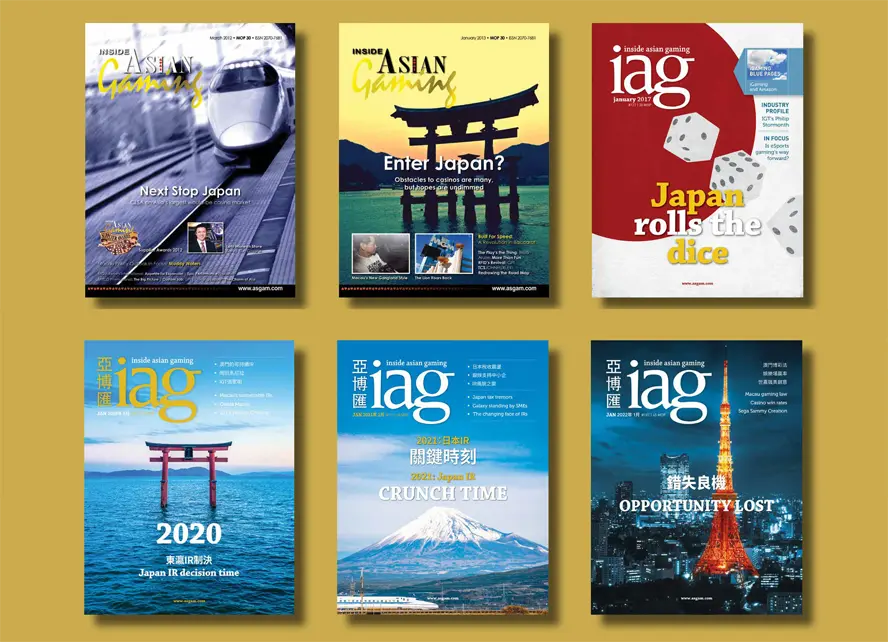
Most exciting for our industry, however, is what’s to come.
According to Steelman, whose team is putting the finishing touches on the long-awaited Phases 3 and 4 of Galaxy Macau, 2023 could be the year we see Macau undergo yet another dramatic transformation – much like the one that brought us the adults’ playground that is the modern-day Las Vegas.
“Now the challenge [for Macau] is to create activities and events that can extend the visit and create other reasons [apart from gaming] to visit,” he says.
“Vegas did not really take off until 1989 and the opening of the Mirage, which was really where diversity was first created when you could visit Las Vegas and have a wonderful time and not gamble.
“One of the biggest things about Vegas is that the group works together to advertise Las Vegas through the LVCVA. They sponsor and promote the conventions and sports events. They finance events such as American Football Games, the Formula 1 and unusual events like the NFL Draft. Allegiant Stadium [in Las Vegas] has become the most popular stadium in America in terms of revenue and attendance.
“Imagine if Macau demolished its stadium and built an equivalent to Allegiant or SoFi Stadium (home to the LA Rams and LA Chargers) in Los Angeles? Macau could become the home of all major sporting events in the region, as it needs to be.
“When that happens, Macau will truly become the Las Vegas of the East.”
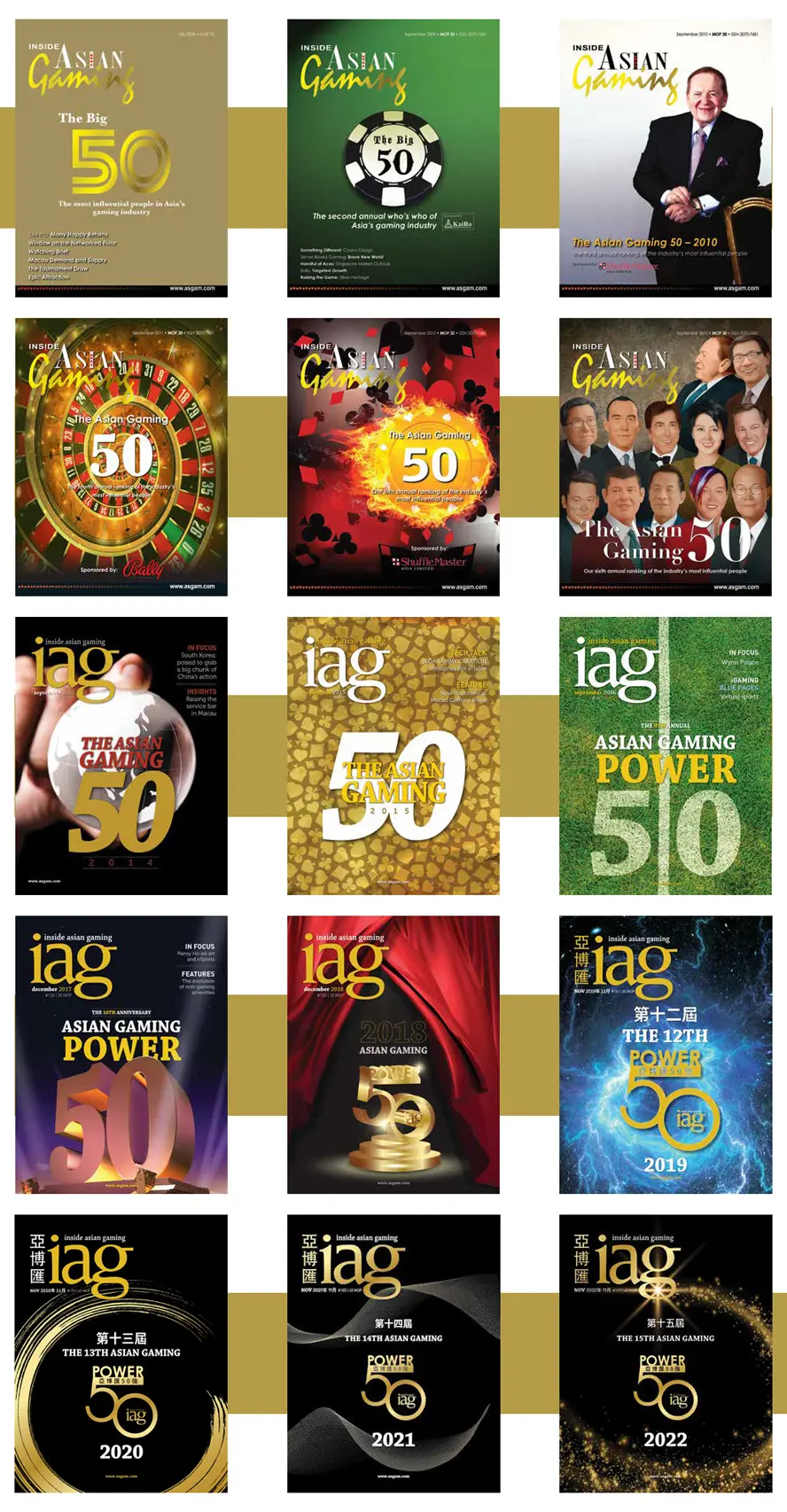
200 ISSUES OF IAG
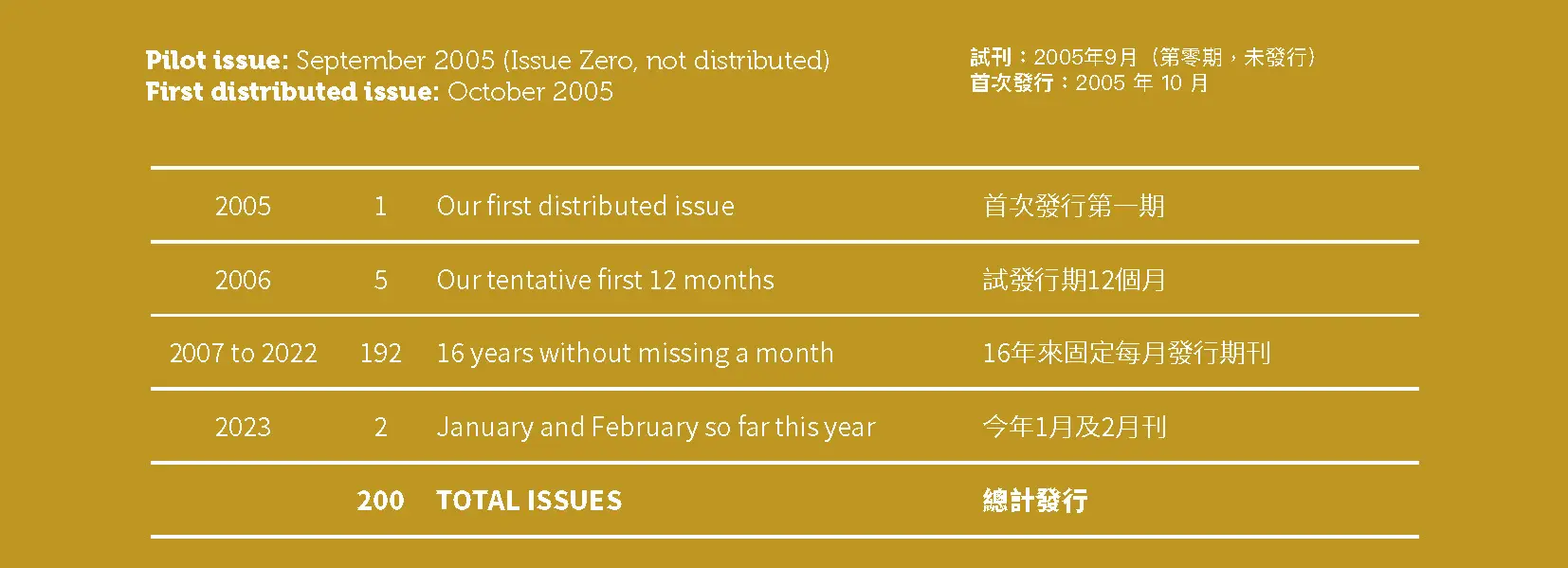
APAC INDUSTRY LEADERS ON 200 ISSUES OF IAG
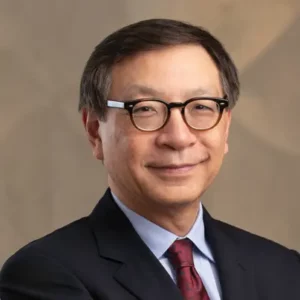
“On this special occasion, I’d like to congratulate IAG on releasing its 200th issue. Since its inception in 2005, IAG has been providing insightful reporting on the current affairs of Asia’s gaming and integrated resort industry. For 18 years, the publication has developed itself into a leading B2B digital and print media brand in Asia that receives high recognition from the industry. Taking this opportunity, I’d like to thank IAG for its continuous contribution in publicizing the industry’s news and wish IAG unwavering success in the coming years.”
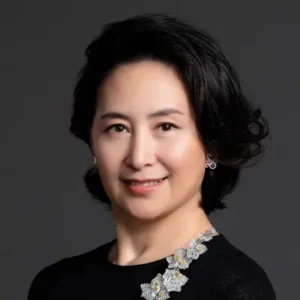
“On behalf of MGM, I would like to congratulate IAG on its 200th issue! For 18 years since its establishment in 2005, IAG has been forging recognition by constantly offering quality and reliable news and insights into Asia’s integrated resort sector, and keeping readers ahead of industry trends.
We would like to take this opportunity to thank IAG for its enduring contributions to the industry, and wish IAG further success in the future.”

“Congratulations to IAG on its 200th issue! IAG has been one of the major media leaders in the region for 18 years now, providing news, analysis and valuable insights for the gaming industry in Macao and beyond.
As an integrated resort operator, Sands China is grateful for the innovative and reputable service that IAG provides to its readers, ourselves included, and for our collaborations over the years, such as opportunities to host The Asian Gaming Power 50 gala dinner.
We look forward to many more years of outstanding journalism ahead from IAG! Congratulations!”
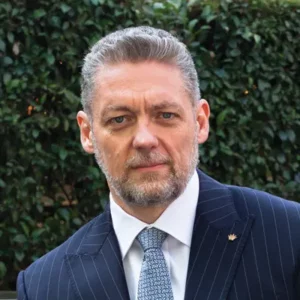
“IAG has played a significant role in the region over the past 18 years, and I would like to congratulate Andrew and the team for achieving this milestone. Industry publications are key to how we engage with our peers and guests, and I am personally grateful to IAG for the industry coverage they’ve provided to the integrated resorts I have been part of during this time. I wish the team well in the years ahead.”
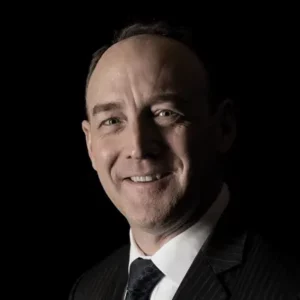
“We are grateful to Inside Asian Gaming for highlighting in the magazine’s cover story the opening in 2015 of City of Dreams Manila, the second luxury integrated resort to be established in the Entertainment City. You enthusiastically announced the formal entry of Melco Resorts & Entertainment Limited (Melco) in the Philippines’ dynamic tourism industry as it brought Macau’s professional gaming into the country, raising the profile of the Philippines as a gaming destination. Seven years later, we are proud to have made IAG history as the venue sponsor of the first Asian Gaming Power 50 Black Tie Dinner to be held outside Macau. We are honored to have been accorded this distinction by the publication that has become the industry’s veritable “first read of the day” about the happenings in the region in the past 18 years and counting.”
COVER CHARISMA
Over the 18 years in which IAG has been published we have generally focused on topics and locations for our cover stories. But every now and then – in fact on just 27 of our 200 covers – we have devoted our cover to a major feature on an individual industry personality. And here they are:
3 covers
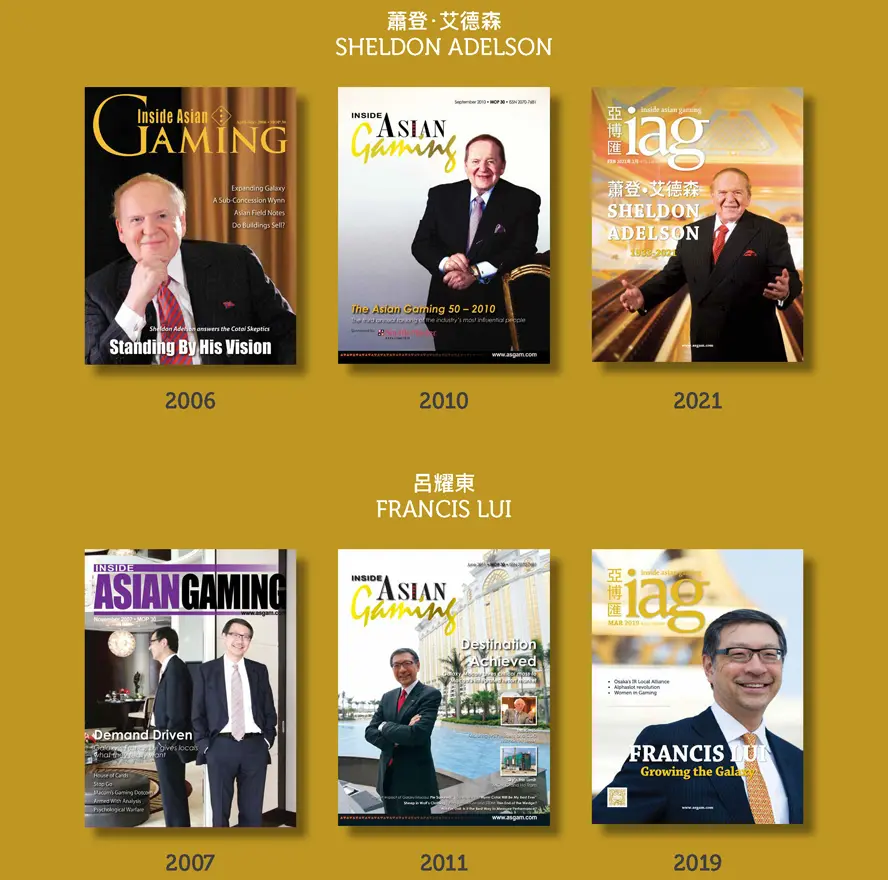 2 covers
2 covers
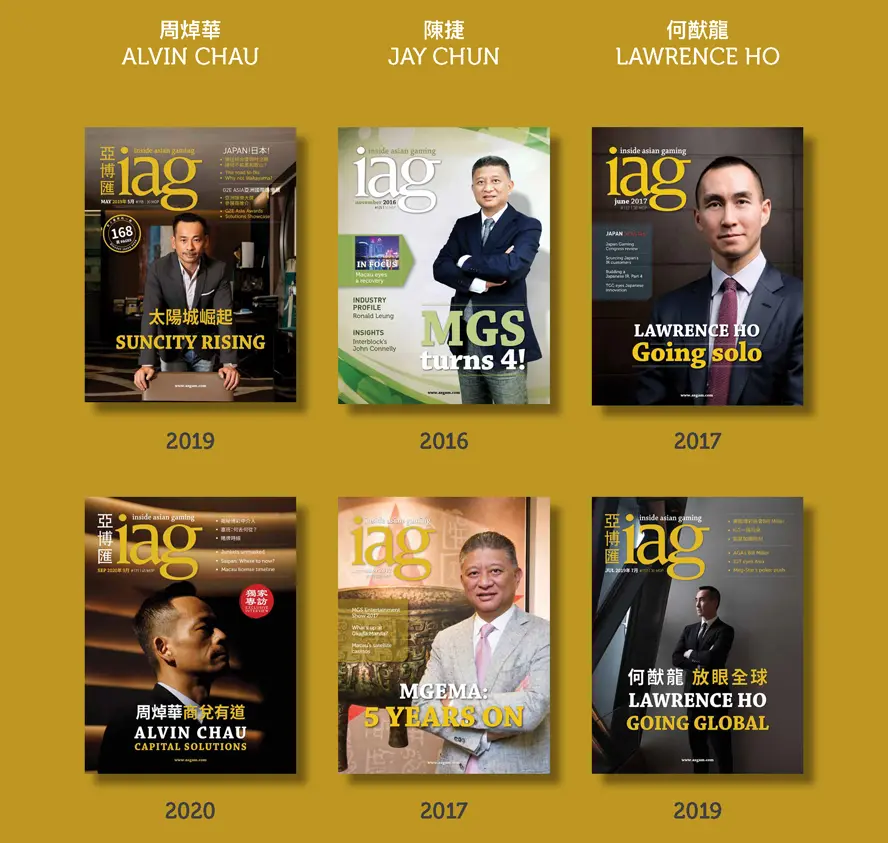 1 cover
1 cover
